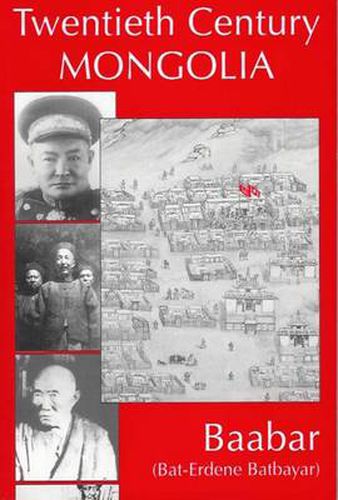Readings Newsletter
Become a Readings Member to make your shopping experience even easier.
Sign in or sign up for free!
You’re not far away from qualifying for FREE standard shipping within Australia
You’ve qualified for FREE standard shipping within Australia
The cart is loading…






This history of Mongolia in English highlights the role of international politics in the shaping of Mongolia’s history, involving Russia/the Soviet Union, China and Japan. It is composed of three parts, each examining crucial periods in the 20th century, concluding with Mongolia’s independence from China in 1946. The first section offers a survey of the history of Mongolia up to the 1911 revolution. The second part looks to the political situation in the late 19th and early 20th centuries, up to the early socialist period (the early 1920s). The last section darws heavily upon new material, now available since the collapse of the socialist regime in 1990. It offers an understanding of the events of the 1920s and 1930s in Mongolia - a key period in the country’s history. During this period the Soviet influence became do,minant, and they faced the most serious threats to their power. This part of the book also examines the destruction of the Buddhist church and nobility by the socialists, concluding with the official recognition of Mongolia’s independence by China in 1946.
$9.00 standard shipping within Australia
FREE standard shipping within Australia for orders over $100.00
Express & International shipping calculated at checkout
This history of Mongolia in English highlights the role of international politics in the shaping of Mongolia’s history, involving Russia/the Soviet Union, China and Japan. It is composed of three parts, each examining crucial periods in the 20th century, concluding with Mongolia’s independence from China in 1946. The first section offers a survey of the history of Mongolia up to the 1911 revolution. The second part looks to the political situation in the late 19th and early 20th centuries, up to the early socialist period (the early 1920s). The last section darws heavily upon new material, now available since the collapse of the socialist regime in 1990. It offers an understanding of the events of the 1920s and 1930s in Mongolia - a key period in the country’s history. During this period the Soviet influence became do,minant, and they faced the most serious threats to their power. This part of the book also examines the destruction of the Buddhist church and nobility by the socialists, concluding with the official recognition of Mongolia’s independence by China in 1946.